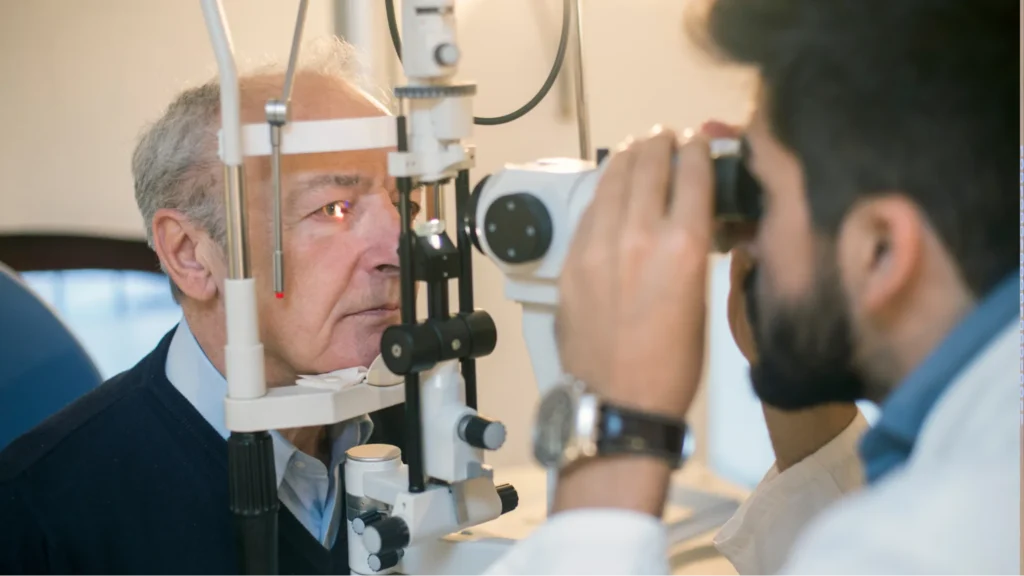We all rely on our eyes—kids need sharp sight to learn, teens to study and play, adults to work, and seniors to stay independent. Yet vision often slips down our to-do list until it’s too late. Whether you’re juggling baseball games, deadline week at the office, or planning your morning routine in Barrie, Brampton, or Thornhill, getting ahead with preventive eye care can save you headaches (literally) and keep your world in focus. In this post, you’ll find practical strategies for every age group—from the little ones discovering picture books to grandparents craving road-trip views—so you can spot early warning signs, form healthy habits, and enjoy clear vision for years to come.
Why Preventive Eye Care Matters
Good vision is more than 20/20—it’s about comfort, productivity, independence, and safety. Ignoring minor irritations or skipping exams might cost you blurry reading, headaches, or worse, irreversible eye disease down the road. By taking small steps now—such as scheduling routine eye exams or adding a handful of spinach to your dinner—you can reduce the risk of serious issues, including glaucoma, macular degeneration, or diabetic retinopathy. Preventive eye care means catching problems early, when treatments are easier, and building habits that protect your eyes every single day.
Routine Eye Exams: Your First Line of Defense
Even if your vision feels fine, comprehensive eye exams are crucial. At LMC Optometry & Eye Care, we recommend:
- Kids (0–12): First exam by age 1, then at 3, then before school starts.
- Teens & Adults (13–45): Every two years if healthy, more often if you wear glasses, have a family history, or have high screen time.
- Middle-Aged & Seniors (46+): Annual exams to spot age-related changes like presbyopia or cataracts.
Early detection means simple fixes—such as new glasses, dry-eye treatments, or a quick laser procedure—instead of complex surgeries later on.
Children’s Eye Care: Building a Strong Foundation
Children’s eyes develop rapidly. Left unchecked, mild issues such as amblyopia (lazy eye) or astigmatism can hinder learning. Here’s how to support healthy vision in kids:
- Watch for Signs: Squinting, covering one eye, holding books too close, or frequent headaches.
- Limit Screen Time: Aim for no more than 1–2 hours of recreational screens per day and enforce the 20-20-20 rule: every 20 minutes, look 20 feet away for 20 seconds.
- Encourage Outdoor Play: At least 1–2 hours daily outdoors reduces the risk of myopia (near-sightedness) development.
- Balanced Diet: Bright fruits and veggies—carrots, sweet potatoes, oranges—pack vitamins A and C to nourish eyes.
Teen & College Student Eye Health: Battling Digital Strain
Teens juggle screens for school, gaming, and social media—often without blinking. To keep their vision sharp:
- 20-20-20 Breaks: Set phone reminders.
- Blue-Light Protection: Blue-light-filter lenses or screen settings help reduce fatigue.
- Proper Workspace: Ensure screens sit an arm’s length away, eye-level or slightly below.
- Sports Safety: Wear polycarbonate sports goggles for soccer, basketball, or hockey.
Building these habits now means fewer headaches and clearer vision when they hit the books or the field.
Adult Eye Care: Balancing Work, Family & Screens
Whether you’re crunching spreadsheets in Thornhill or chasing toddlers in Scarborough, your eyes deserve TLC:
- Ergonomic Setup: Monitor at eye level, adjustable chair, and soft overhead lighting.
- Frequent Blinks: Consciously blink or use preservative-free artificial tears to combat dry-eye syndrome.
- UV Protection: Whether walking the dog or at the drive-through, quality sunglasses that block 100% of UVA/UVB rays guard against cataracts.
- Nutrition for Vision: Oily fish, almonds, and leafy greens deliver omega-3s and lutein for retinal health.
Don’t let skipped exams and missed breaks catch up with you, blurry days later on.
Middle-Age & Senior Eye Health: Spotting Age-Related Changes
As we approach mid-life, the risk of presbyopia, glaucoma, and macular degeneration rises:
- Annual Screenings: Pressure checks for glaucoma, retinal imaging for macular health.
- Reading Glasses vs. Progressives: Ease the shift from distance to near without neck strain.
- Lifestyle Tweaks: Quit smoking, manage blood pressure, and control blood sugar to reduce AMD and diabetic retinopathy risk.
- Home Safety: Bright, even lighting in hallways; remove tripping hazards to prevent falls due to poor vision.
Staying on top of age-related changes means holding onto independence—reading labels, driving, and playing with grandkids—longer.
UV & Blue-Light Protection: Dual Defense

Sunlight and screens both take a toll:
- Sunglasses Every Day: Cloudy or sunny, UV rays reflect off snow, water, and pavement. Choose wraparound styles for extra coverage.
- Blue-Light Filters: Clip-on or built-in options shield you during evening device use, reducing sleep-disrupting glare.
Picture a crisp sunset without squinting or tired eyes—the right eyewear makes it possible.
Nutrition & Hydration: Fueling Your Eyes
What goes on your plate shows up in your eyes:
- Vibrant Veggies: Spinach, kale, and bell peppers for lutein and zeaxanthin, antioxidants that protect the macula.
- Healthy Fats: Salmon, chia seeds, and walnuts support tear quality and reduce dry-eye symptoms.
- Hydration: Aim for 8 cups of water daily; dehydration leads to scratchy, irritated eyes.
Eye Safety at Work & Home
From lab goggles to power-tool shields, safety gear isn’t optional for many jobs:
- Construction & DIY: ANSI-rated goggles or face shields when hammering, sawing, or using chemicals.
- Office Ergonomics: Anti-glare screen protectors, adjustable monitor arms, and footrests ease eye and body strain.
- Home Chores: Wear goggles for lawn care, BBQs, or pool chemicals—household mishaps cause thousands of eye injuries yearly.
Making protection a habit prevents painful trips to the emergency room.
Building a Family Eye Care Routine
Protecting everyone’s vision is easier when it’s part of your family’s rhythm:
- Eye-Exam Day: Coordinate appointments for kids, parents, and grandparents back-to-back at LMC Optometry & Eye Care.
- Weekly Screen-Time Check: Family device-free hour after dinner—cards, walks, or chats.
- Sun & Safety Sundays: Inspect everyone’s sunglasses and sports goggles before weekend outings.
- Meal Plan Monday: Build a menu around eye-healthy staples—tuna salad, carrot soup, berry smoothies.
These simple rituals keep eye care top-of-mind—and make it fun.
Early Signs of Vision Loss: Know When to Act
Spotting trouble early can save sight. Look for:
- Blurriness that doesn’t clear with rest or new glasses
- Sudden flashes or floaters in your field of vision
- Persistent eye pain or redness
- Difficulty adapting to low light or glare
If you notice any of these, don’t wait—book an exam right away.
Q&A: Your Preventive Eye Care Questions Answered
What’s the best age to start preventive eye care?
Routine checks should begin around age 1 with an infant’s first exam, followed by preschool and school-entry visits. From the teen years onward, exams every two years (or annually after 45) keep issues at bay.
How often should I take screen breaks?
Aim for the 20-20-20 rule: every 20 minutes, look 20 feet away for at least 20 seconds. Set a timer or use an app to make it a habit.
Are blue-light glasses really worth it?
They help filter harsh screen glare and reduce eye strain, especially if you log long hours on devices. Many find relief with a simple clip-on or built-in lens option.
Can diet really improve my vision?
Yes—nutrients like lutein, zeaxanthin, omega‑3s, and vitamins A, C, and E support retinal health and tear quality. Think leafy greens, fish, nuts, and colourful fruits.
What protective eyewear do I need for sports or work?
Choose ANSI-rated polycarbonate goggles or face shields for high‑impact activities and chemical exposure. For outdoor fun, sunglasses blocking 100% UVA/UVB rays are a must.
How do I spot early signs of serious eye issues?
Watch for sudden floaters or flashes, blurred vision that doesn’t clear, persistent redness or pain, and trouble seeing in dim or overly bright light. Any of these calls for an immediate exam.
Start protecting your vision today
Protecting your vision isn’t a one-and-done deal. It’s a lifestyle woven into family outings, workdays, and mealtimes. By scheduling regular eye exams, breaking up screen time, suiting up with UV-blocking sunglasses, and fueling your eyes with nutrient-rich foods, you’re building a fortress around your sight—today, tomorrow, and decades down the road.
Ready to make eye health a priority? Schedule your family’s comprehensive eye exam at LMC Optometry & Eye Care today and take the first step toward lasting vision wellness.



